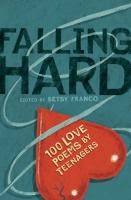 Salas, Laura Purdie. 2011. BookSpeak! Poems About Books. Ill.
by Josee Bisaillon. Boston: Houghton Mifflin Harcourt Pub Co. ISBN 9780574223001
Salas, Laura Purdie. 2011. BookSpeak! Poems About Books. Ill.
by Josee Bisaillon. Boston: Houghton Mifflin Harcourt Pub Co. ISBN 9780574223001
(Image obtained from
amazon.com)
Summary
BookSpeak! is an anthology picture books showcasing different elements of
books, genres, characters, and more found through an adventure in reading. The
intended audience for this anthology pre-school to third grade.
Quality and Appeal
Poetry pictures
books about sharing the joy of reading are certainly in my wheelhouse. My personal favorite (before reading this
book) was I Am the Book by Lee
Bennett Hopkins. After reading BookSpeak! Poems About Books, Hopkins surely has
a competitor!
BookSpeak! Poems About Books serves as an
excellent introduction to teaching poetic and literary meaning as the poems
contain a plethora of literary concepts, form, and styles. There are 21 poems within this picture book
and each poem is cleverly titled and even more cleverly written. Some
of the vocabulary may be a bit advanced for the younger readers. Picking through the poetry found in BookSpeak!
Poems About Books to tailor to the audience is recommended.
Now, it must be
mentioned that the mixed media illustrations by Bisaillon are incredible. While any other illustrator would likely be
able to craft artwork to further (or sustain) the overall theme of BookSpeak!
Poems About Books, Bisaillon manages to strengthen the theme and propel the
poetry forward. He accomplishes this by
combining his collage work with some indication of literature, such as ink blot
birds, animals crafted from torn book pages (with an evidently aged typeset), patterned
bookshelves, handwriting, and more.
Spotlight Poem
Skywriting
Line after line of
inky black birds
forming the flocks
that shift into words.
Page after page of
tales winging by,
singing a story
against a
white sky.
This poem and any of
the poetry in BookSpeak! Poems About
Books can be used to introduce a learning block on the elements of a story.
Books like BookSpeak! Poems About Books
I Am the Book by Lee Bennett Hopkins
Little Red Writing by Joan Holub
.jpg)
.jpg)
.jpg)
.jpg)
.jpg)


